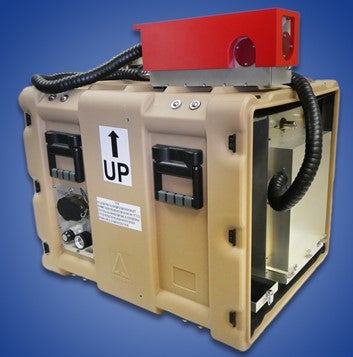
American defence prime Northrop Grumman has announced its delivery of a miniaturised high-energy laser system to the US Government known as ‘Phantom’.
Northrop Grumman ruggedised this 10kw Directed Energy Weapon (DEW) system for field use, and miniaturised it – to the size of a mini-fridge – allowing for its rapid integration as part of various tactical solutions.
Phantom also weighs less than 200 pounds, enabling lift, carry and installation by as few as two personnel. Likewise, the Phantom customer will integrate the DEW with other subsystems for testing and delivery to military users.
Phantom as a milestone in adopting DEW systems
Robert Fleming, vice president and general manager of Strategic Space Systems at Northrop Grumman stated: “By minituarising this advanced capability we are expanding the reach of our technology and continuing to lead the way in high-energy lasers.
“Northrop Grumman is using its expertise in DEW to deliver an extremely compact, lightweight and efficient laser for the [end user].”

Growing demand for DEW systems
Plans for DEWs, which encompass defensive weapons systems that produce electromagnetic energy to ‘fire’ on a target such as a drone or missile, were first revealed in 1983, at the height of the Cold War.
Now, the systems have grown in use since DEWs offer a practical and symbolic advantage due to their reduced risk of collateral damage, low-cost (and potentially renewable) energy sources, and mitigated lethal capabilities.
The Phantom marks a milestone in making DEWs more readily accessible to militaries. Its mobility and integration allows the end user to use the system across all five domains – “to protect US forces from a range of threats such as unmanned aerial systems, rockets, artillery and mortars, fast attack boats and missiles.”



